#west african pantheon
Text
child of anansi child of athena battle to the death. who wins
#trick question BITCH. they quickly realize their seamless drift compatibility and form an unbreakable warriors bond. and theyre also in love#percy jackson#anansi#anansi the spider#pjo#heroes of olympus#pjo verde#athena#greek pantheon#ghanaian pantheon#west african pantheon#african pantheon#am doing research and it is v cool#thinking about them… (multiple different pantheons as a reflection of humans in their respective eras and areas)#my shit
2 notes
·
View notes
Text


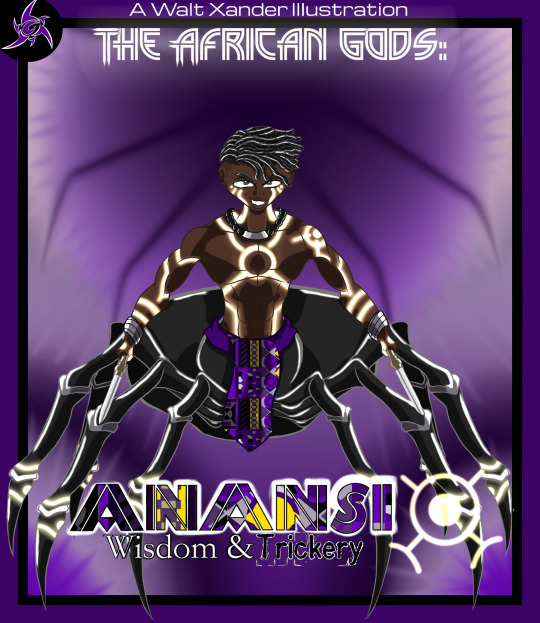

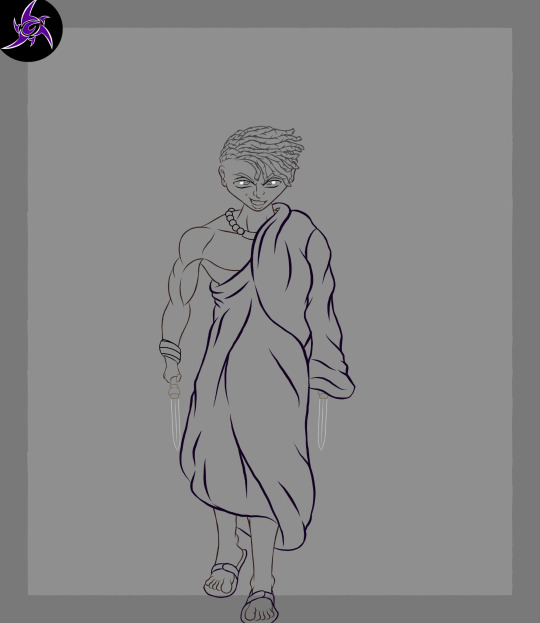
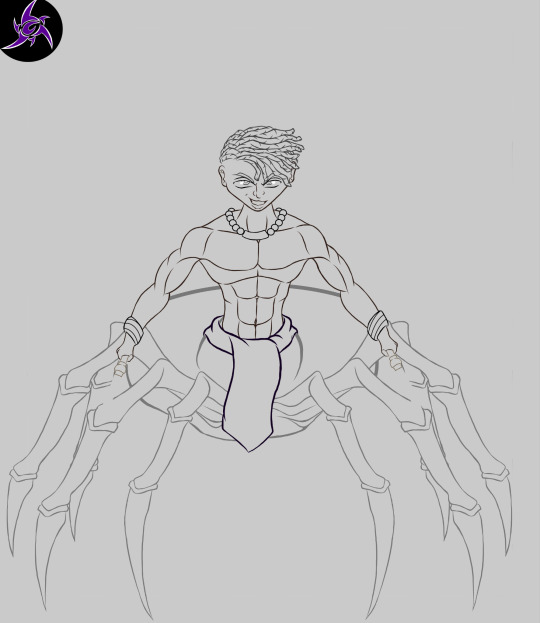
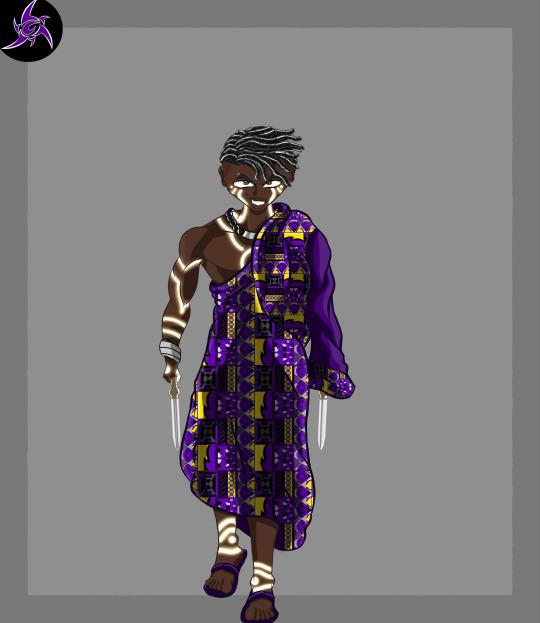
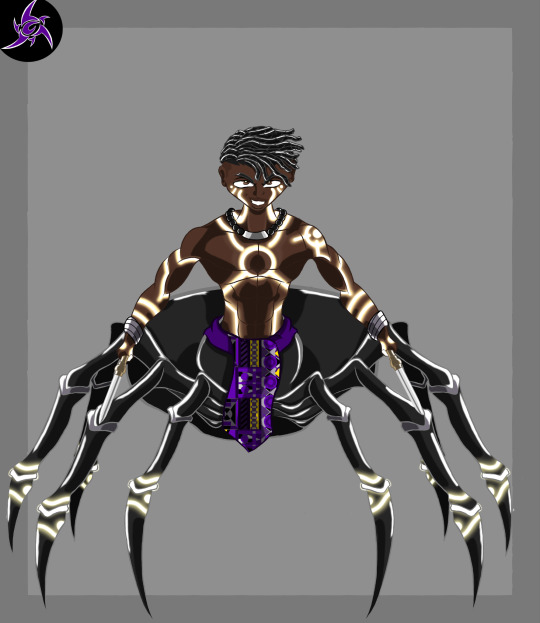
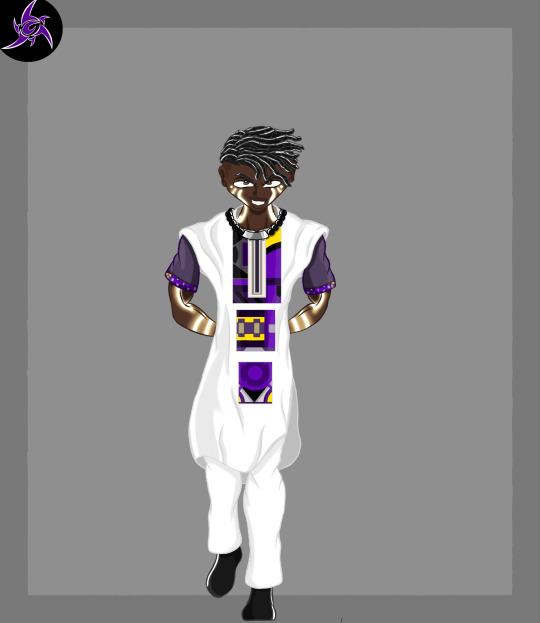
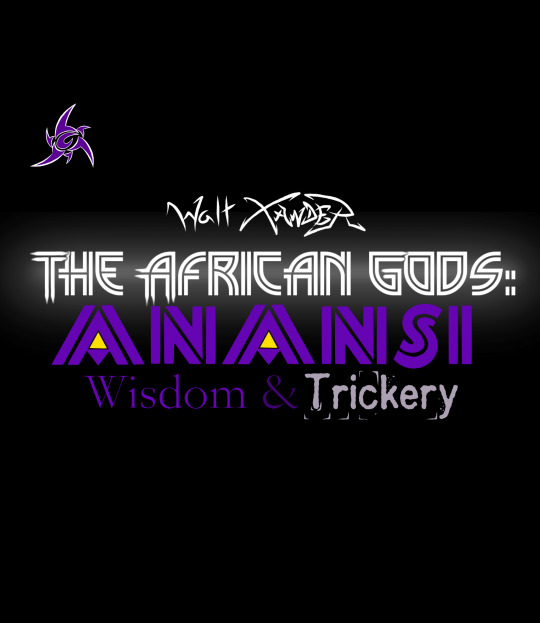
New Classics Challenge
Another African God, this time Anansi. Basically Africa's Loki. A god of stories, wisdom, knowledge & trickery. What he lacks in strength, he makes up for with his wits.
This guy once outsmarted another god, the Sky God Nyambe(that's another African God I'll draw up eventually). He sent Anansi on tasks that seemed impossible, to receive stories in return to give to humans. He didn't think he would actually accomplish those tasks, but he did.
#Anansi#African Gods#African Pantheon#digital art#art#Africa#digital artwork#digital doodle#fyp#Akan#West Africa#Trickster#spider#purple#african mythology#folklore
1 note
·
View note
Text
"Let's make games and media about other mythologies and pantheons other than Norse or Greco-Roman" is a take I really, really get, but the unfortunate reality is that most Western media conglomerates are pretty culturally white, and can you imagine the appropriation shitshow that would result from them portraying indigenous mythologies instead of the two pantheons that people can at least somewhat ascribe to Western European tradition? Ancient Egyptian seems the next most "safe" due to cultural penetration and time remove, and even that sparks discourse when it's done. Honestly I'm surprised that Disney even mostly got away with Moana, and that hardly went without critique. I think the execs that don't want bad press are well aware of this and are afraid to wade in.
I mean the obvious answer is for them to just hire people who can boast more claim to the tradition in question, but unfortunately it doesn't tend to work that way en masse, and also, even if they did do that, there would be a continent who would complain anyway. Own narratives are frequently called out as bad rep, usually by people who don't know the provenance (but sometimes even when they do!), and it'd be even worse with a big corporate name from the west attached.
Anyway buy foreign art I guess, but under current trends the big multi-billion God of War equivalent about African tradition is unlikely to come soon, I guess. Kind of an unfortunate side effect of the representation and appropriation discourse that makes certain kinds of narrative more scarce.
(A possible exception to all this might be, for instance, Japanese spiritual tradition, as there are plenty of Japanese media products that do well in the West. But this proves the point, because for instance I can think of examples of video games and films that feature oni, etc, whereas I can't for the less widespread or internationally exposed traditions that I describe).
80 notes
·
View notes
Text
It's common knowledge by now that West Asian and African ppl made up a sizable chunk of the population of ancient Hellas. This can be found in the texts of Herodotus, Homer, Heraclitus and in few surviving pieces of art; like the Minoan frescoes, bronze statues and vase paintings. And the one surviving bust of Memnon.
It's also common knowledge by now that churches tried to erase all traces of a "mixed" population by destroying most of the statues that depicted these ppl. Especially black Greek ppl. In a similar way Northwestern Europeans took our statues and bleached them. Why I am certain of that? Let's take Delos as an example. Delos was a religious centre, but it wasn't exclusively pandering to those who believed in the Pantheon.
In fact, what we see there is that both Eastern and Southern cultures celebrated similar or parallel forms of gods. Delos was specifically known for the worship of moon and sun gods. Those who worshipped Artemis could do so next to someone who worshipped Isis and someone who worshipped Tanit. Please feel free to Google this, I grew up there.
"Stop perpetuating the myth that we were black" gurl who hurt you. The existence of people with darker skin than yours doesn't erase you. Please calm down. We're not here to hurt you.
With sources cause 凸(¬‿¬)
431 notes
·
View notes
Text
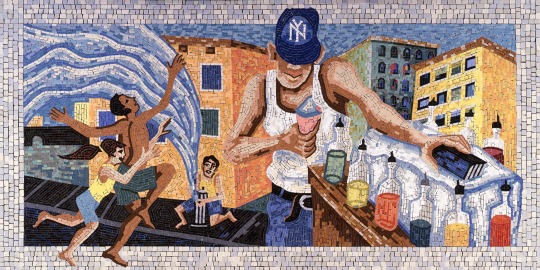
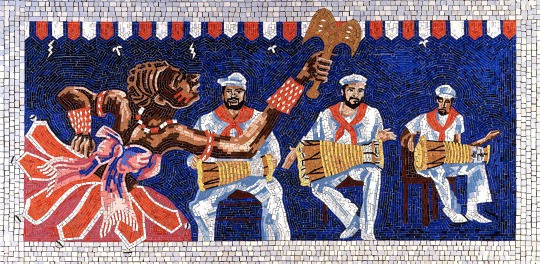


Drawing upon childhood memories, Manny Vega’s “Sábado en la Ciento Diez (Saturday on 110th Street)” (1996) at 110 St (6) station captures the joyous, colorful atmosphere of la ciento diez. The four mosaic panels—“Earth,” “Air,” “Fire,” and “Water”—depict scenes one would expect to find in the East Harlem neighborhood. In “Earth,” a street vendor sells bananas, plantains, papayas, avocados, and coconuts. “Air” illustrates a typical summer-in-the-city activity: children playing under the spray of a fire hydrant while a piraguero shaves a block of ice to make tropical fruit-flavored snow cones of guava, papaya, mango, and tamarindo. Shangó - a deity from the Yoruba pantheon - embodies Harlem's West African roots in “Fire,” dancing to the beat of three bata drummers. In “Water,” an elderly woman represents motherhood as she carries a bouquet of flowers and leads a child by the hand from a neighborhood botánica.
Vega’s work is celebrated in “Byzantine Bembé: New York by Manny Vega” at the Museum of the City of New York. On view through December, the exhibition highlights the artist’s unique style, dubbed “Byzantine Hip-Hop,” as well as his dedication to sharing stories of community and the diasporic experience.
📸: David Lubarsky
29 notes
·
View notes
Text
What are The Dream-Folk?
Dream Folk, Dream Entities, Dream Creatures, Night Kind, Nightmare Folk, Residents of The Dreaming... Whatever you call them, they are the subjects of Morpheus (Dream of The Endless).
And some new fans have been asking about them. What are they? Where do they come from? Does he make them? Were they once human?
Some, yes. Some, no.
The Corinthian, Gault (Brute and Glob in the comics), and Mervyn Pumpkinhead were all made by Morpheus.
The Ravens are all made from souls of deceased humans who were given the option of remaining in The Dreaming as dream entities. This includes Jessamy, Matthew, and Lucien / Lucienne. (And not mentioned in the show: Aristeas, the raven from Ancient Rome).

Yes, Lucienne was once a raven, and before that probably a mortal. There’s a very high chance her current form does not resemble her original pre-Raven form. It might be a form she chose later.
Some Dreaming residents are immigrants from other non-human lands. Nuala is of the Fae. And the second Griffon was a gift from The Greek pantheon (or at least that’s the backstory he remembers).

Then there are also the residents who were probably not created originally by Morpheus but (if destroyed) can be re-created by him, like Cain and Abel. He didn’t create them but Dream of The Endless is able to resurrect Abel when someone other than Cain killed him. When Cain kills him it’s temporary). He was able to call back Abel’s soul and recreate him as a dream entity. Besides originally being hosts of DC’s horror anthology comics, it’s ambiguous as to if Cain and Abel are meant to be the literal Cain and Abel or just manifestations of the collective idea of who Cain and Abel are (hence Cain’s compulsive need to regularly murder his brother).
In the comics Lucifer respect’s Cain’s mark as if it is real or real-enough but at the same time Cain and Abel appear as African for Nada and it’s implied they might also be Romulus and Remus. So there is a high chance that they are the manifestations of the collective idea of who Cain and Abel are, and so they are characters of “Story.” The first story, murderer and victim.
Collective ideas of other famous “story” characters probably wander around The Dreaming. This could be anyone from Little Red Riding Hood and Sherlock Holmes, to The Wicked Witch of the West, The Crypt Keeper, and Slender Man. One of Morpheus’s many titles is “Prince of Stories.”
Puss ‘n Boots is seen briefly in The Sandman: The Kindly Ones.
So you have five forms of sentient subjects in The Dreaming.
1. The ones Morpheus creates. Examples: The Corinthian, Gault, Brute and Glob, Gregory, and Mervyn Pumpkinhead. Merv has even changed over the years and was once apparently Mervyn Turniphead until Pumpkin Jack-o-lanterns became the more popular variant. They are self-aware and have free will. He might create their base personality but if they choose to change from experience and observation that is their own doing.
2. The ones that were deceased humans and Morpheus turned them into dream entities because this is where they chose to spend their afterlife. Examples: Aristeas, Jessamy, Matthew, and Lucien / Lucienne.
3. Characters of “story” who manifest when a collective number of people dream about them enough that they become fixture entities in The Dreaming like Cain and Abel, and Eve.
4. Magical immigrants. Faeries, griffons, etc, that for various reasons were allowed to remain in The Dreaming. Examples: Nuala, the second griffon.
5. The oddity. These are beings pulled out of random dreams, created not-entirely by Morpheus’s consciously willing it, but more of The Dreaming being on autopilot. And they do not fade when the dream they came from ends. This includes baby Goldie’s egg. They technically are created by Dream, just not crafted on a conscious level.

Someone asked “Why don’t the other Endless have servants like these?” Well, the answer is very simple. Morpheus would deny it up and down but... He creates them and keeps them around because... he’s lonely. All the chores he gives them he can technically do himself but he likes the company. Just don’t tell him I told you that.
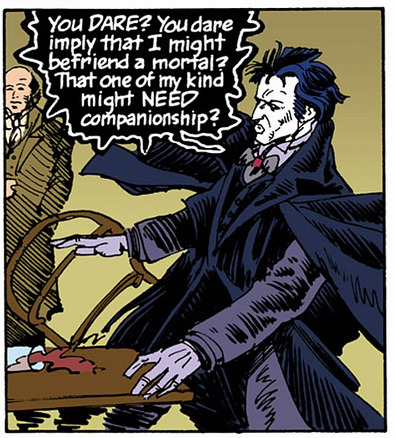
528 notes
·
View notes
Text
Sculpture of Antony and Cleopatra's twin babies

A Sculpture that has been idling in a museum for ages. Egyptologist Giuseppina Capriotti of the Italian National Research Council believes a statue in the Cairo Museum depicts the twin children of Mark Antony and Cleopatra, Alexander Helios and Cleopatra Selene. The sandstone statue was discovered near the temple of Hathor in Dendera on the west bank of the Nile in 1918. Cleopatra VII is known to have commissioned works in that temple, most famously a monumental pharaonic relief of herself and her son by Julius Caesar, Ptolemy XV Philopator Philometor Caesar, aka Caesarion.
The Cairo Museum bought the five-foot-tall statue but didn’t pay it a great deal of attention, thinking it a representation of the twin gods Shu and Tefnet, son and daughter of the sun god Atum-Ra.

The statue is of two nude children, one male, one female, who bear the attributes of sun and moon respectively. They have an arm over each other’s shoulders while they hold a serpent in their other hands. The coils of two snakes wind around their legs and the base of the statue.
Capriotti noticed that the boy has a sun-disc on his head, while the girl boasts a crescent and a lunar disc. The serpents, perhaps two cobras, would also be different forms of sun and moon, she said. Both discs are decorated with the udjat-eye, also called the eye of Horus, a common symbol in Egyptian art.
“Unfortunately, the faces are not well preserved, but we can see that the boy has curly hair and a braid on the right side of the head, typical of Egyptian children. The girl’s hair is arranged in a way similar to the so-called melonenfrisur (melon coiffure) an elaborated hairstyle often associated with the Ptolemaic dynasty, and Cleopatra particularly,” said Capriotti.
The statue dates to between 50 and 30 B.C. Mark Antony and Cleopatra’s twins were born in 40 B.C. so the timing fits, but it’s the unusual iconographic choices which suggest this is not just a statue of Shu and Tefnet. In the Egyptian pantheon, Tefnet, the sister, wears the solar disk, but in this piece the female twin wears the crescent moon and the male wears the sun, in keeping with the Greek tradition of the female moon goddess Selene and the male incarnation of the sun, Helios.
The twins’ embrace could suggest a solar eclipse, which is significant because when Mark Antony officially recognized the twins as his children three years after their birth, the event was marked by a solar eclipse. That’s when Cleopatra changed their names from plain Cleopatra and Alexander to Cleopatra Selene and Alexander Helios.
If these are Antony and Cleopatra’s twins, it’s the first representation of the two together ever discovered. The only other image we have is of an adult Cleopatra Selene on coins minted during her reign as Queen of Mauretania. Alexander Helios does not appear to have survived into adulthood, nor his younger brother Ptolemy Philadelphus.
After their parents’ suicides, all three of Antony’s children by Cleopatra were taken to Rome by Octavian in 30 B.C. to march in his triumph as royal captives in gold chains. He handed the three of them over to his sister Octavia, Antony’s third wife, to raise. The boys disappear from the historical record, perhaps dead at Augustus’ hand. Cleopatra Selene, on the other hand, was married around 20 B.C. to King Juba of Mauretania, a north African client state.
#alexander helios#cleopatra selene#mark antony#marcus antonius#cleopatra#cleopatra vii#antony and cleopatra#ancient egypt#rome#cairo egyptian museum#art history#ptolemaic egypt#ptolemaic dynasty#history
16 notes
·
View notes
Text
Vodou symbolism in Castlevania Nocturne
Vodou developed among Afro-Haitian communities amid the Atlantic slave trade of the 16th to 19th centuries. Its structure arose from the blending of the traditional religions of those enslaved West and Central Africans, among them Yoruba, Fon, and Kongo, who had been brought to the island of Hispaniola. There, it absorbed influences from the culture of the French colonialists who controlled the colony of Saint-Domingue, most notably Roman Catholicism but also Freemasonry. Many Vodouists were involved in the Haitian Revolution of 1791 to 1801 which overthrew the French colonial government, abolished slavery, and transformed Saint-Domingue into the republic of Haiti.
At the heart of Vodou are the symbols known as vèvè. These cosmograms are intricate drawings made with cornmeal, coffee, or flour, and they serve as the visual representation of the spirits and deities (known as lwa, also called loa or loi) honored in Vodou. Each vèvè corresponds to a specific spirit, and invoking them involves drawing the corresponding symbol on the ground. This is often performed by an initiate who has learned the technique and is an essential part of Vodou rituals and ceremonies.
Let's look at some of the symbolism shown in Nocturne.
1. Agwe Arroyo or Agwe Tawoyo/Agwe 'Woyo - "Agwe of the Streams"
Captain of Immamou, the ship that carries the dead to the afterlife. He cries salt-water tears for the departed. He assisted the souls of those that suffered crimes against humanity during the trans-Atlantic slave trade. Agwe is called to calm the waves of the sea or ensure happy sailing, but mainly he is worshipped by those who fish and whose life depends on the life in the waters. People under his protection will never drown and water will never harm them.
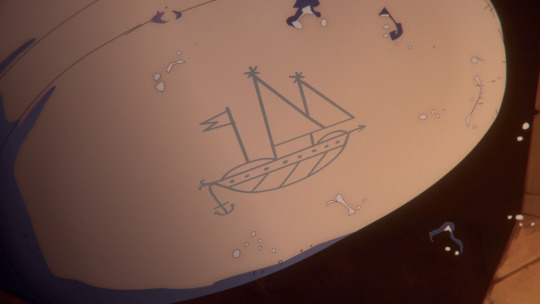

2. Kouzen Zaka, or Azaka
The patron lwa of farmers, but he is also known as a lwa travay, a work lwa. Kouzen Zaka, represented by this vèvè, is the guardian of the fields in Haitian Vodou. The drawing of his symbol showcases elements of agricultural activity, including the earth, machete, sickle, hoe. Zaka is closely tied to work and is revered by farmers and those who rely on agriculture for their livelihood.
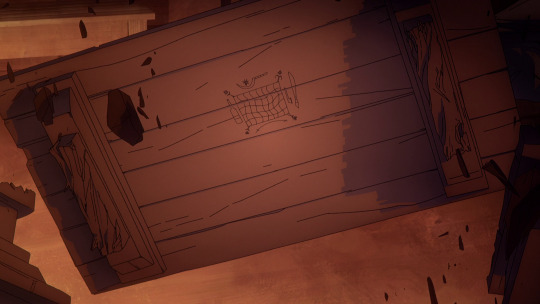

3. Erzulie Dantò or Ezilí Dantor
The main lwa of the Petwo lwa family in Haitian Vodou. She is a powerful and protective mother figure, often depicted holding a knife, symbolizes justice and will forcefully fight to protect her children, who are her loyal followers. She is a single mother, a Haitian peasant who is fiercely independent and takes care of her own, a strong protector of women and children.

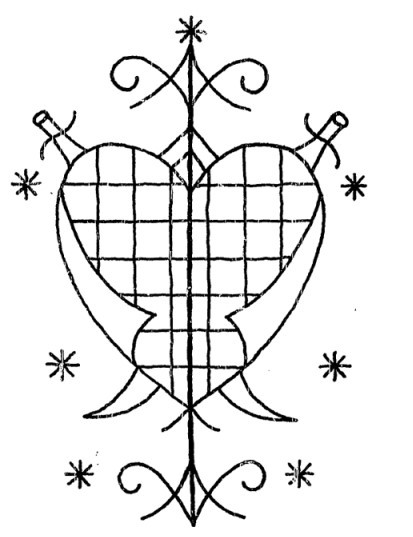
4. Legba: The Guardian of the Gates
Papa Legba, the first spirit to manifest during a Vodou ceremony, holds a special place in the Vodou Pantheon in Haiti. His vèvè symbolizes his role as the barrier between the two worlds, with two perpendicular axes and his cane. Known as a trickster Loa, he usually appears as an old man on a crutch or with a cane, wearing a broad-brimmed straw hat and smoking a pipe, or drinking dark rum. The dog is sacred to him. He carries a sack on a strap across one shoulder from which he dispenses destiny. He is believed to speak all human languages. In Haiti, he is the great elocutioner: Legba facilitates communication, speech, and understanding. During Vodou ceremonies he opens the spiritual gateway that separates the Loas from our physical world.
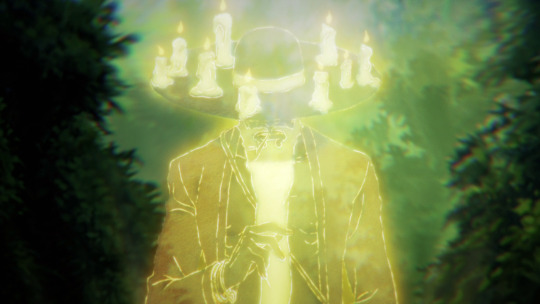
In addition, Papa Legba is the guardian of portals, doors, and crossroads. His role is critical in any Vodou ritual, as he's the one who grants access to the other Loas and allows them to manifest themselves during the ceremony.
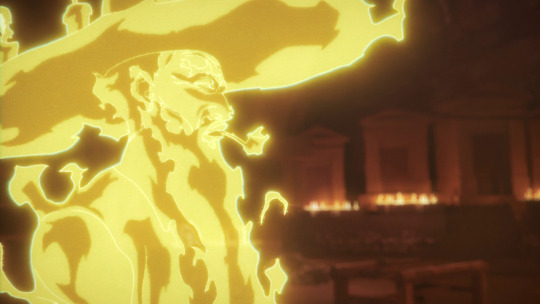
What we hear Annette chant in the series is 'Papa Legba: Ouvè Baryè'a' (Papa Legba: Open the Gate).
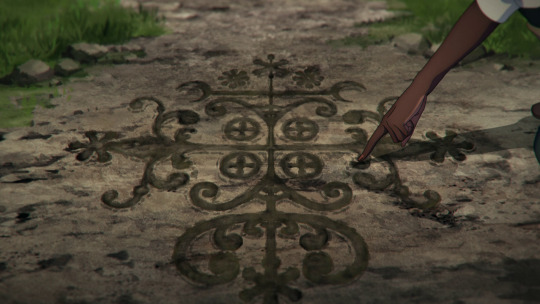
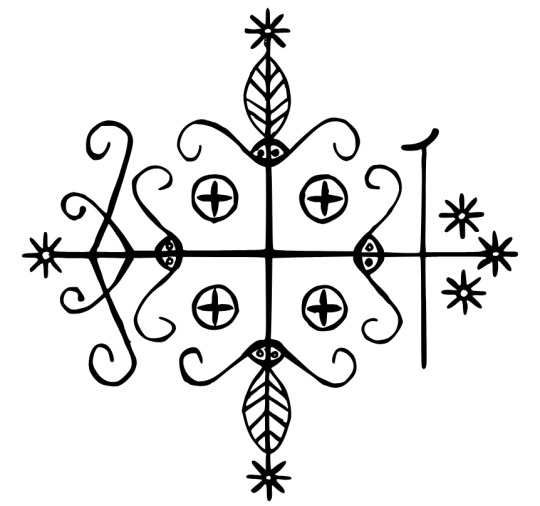
There's a lot more to dive into, but this was a summary.
21 notes
·
View notes
Text
Mistress of Waters: Oshun
Throughout history, water has been used as a symbol of wisdom, power, grace, music, and sensitivity.
Across many ancient civilizations, love was placed under the domain of a particular deity, usually, but not in all cases, a goddess.

In the Classical world, for instance, there were Venus and Aphrodite, love goddesses of the Roman and Greek pantheons, respectively.
In West Africa, the Yoruba people believe in a love goddess named Oshun.
They inhabit the southwestern part of modern-day Nigeria and the southern part of Benin.
Although #Oshun is regarded principally as a goddess of love, there are other aspects to this Orisha.
Oshun is the goddess of love, sensuality, and water and the protective deity of the river Oshun. She is also associated with fertility, lushness, greenness, and life.
Alongside this river is a sacred grove, probably the last in Yoruba Culture, dedicated to Oshun.
When she came down to earth, she wore a gold dress and jewelry. This is why her worshippers also wear gold and yellow attires to honor her.
According to the tales, the gods came down, they completely disregarded Oshun while they engaged in creating the earth.
She returned to the heavens, where she spent time admiring herself in the mirror. Oshun often carries a mirror so that she can admire her beauty.
In the absence of Oshun, the other gods faced difficulties. They could not populate and revive the earth.
They went back to heaven to apologize and beg her. When she came back to the earth, she revived it with water.
Although Oshun governs love and sweet waters, she is also a benevolent deity.
She is said to be the protector of the poor and the mother of all orphans. It is Oshun who fulfills their needs in this life.
Oshun is commonly shown as a beautiful, charming, sensual, and coquettish young woman.
During the slave trade, Oshun was brought to the Americas and adopted into the pantheons, branching out of the traditional African belief system.
#oshungoddess#oshun#oshunenergy#vodou#illustration#artists on tumblr#haiti#africa#astrology#voodoo#waters#african spirituality#african beliefs#esoteric#ancestral work#ancestors#magick#conjure#illustrator#ogoun#oya#iya#shango#damballah#dahomey#guinen
126 notes
·
View notes
Text
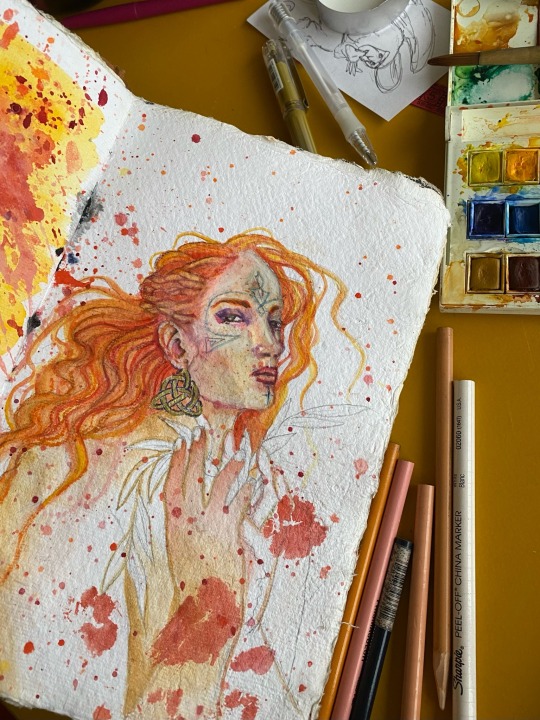
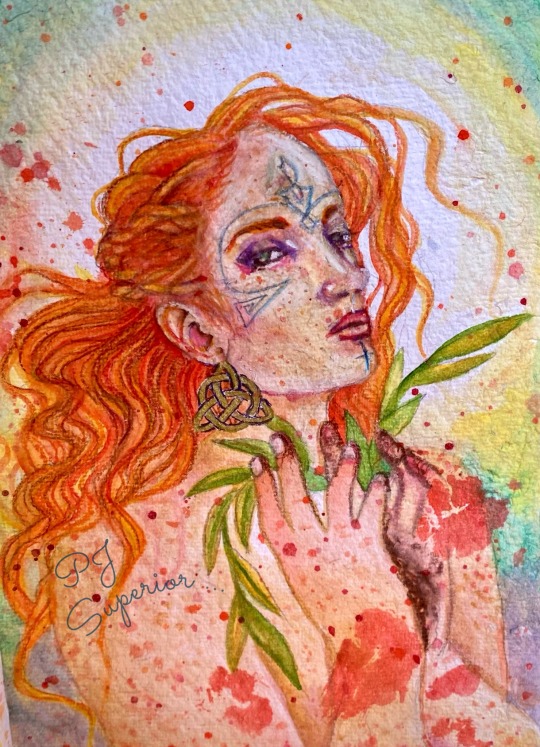
The splatters from the other page practically begged me to make them into some of Brigid’s freckles.
Brighid/Brig is an ancient Irish goddess associated with fire, among other things, and renowned with many blessings from protection to poetry. The most ancient surviving texts recounting her to this day describe her having two sisters of the same name, Brighid the Smith, associated with metalworks in both weaponry and jewelry, and Brighid the Healer, associated with herbalism and song. This has led to Brighid being hailed as a Triple Goddess in her ancient form. ☘️
Indeed the triplicate of Brigid seems to have transformed along with the Irish diaspora following Catholicism and English oppression. St. Brighid appeared in Ireland under the rule of the Catholic Church, most likely another example of Christianizing pagan figures as seen cross culturally. The Feast of St. Brighid coincides with the ancient Celtic pagan late winter festival of Imbolc on the first of February after all.
Among the African diaspora in the Caribbean, where English colonists sent both enslaved Africans and indentured Irish servants to work sugar and other plantations, revered loa of the Voudun pantheon from West Africa were famously hidden within icons of Catholic saints. It is within this particular tradition that Mama Brigitte is found with her flaming red hair, having been married into the Ghede Spirit family to Baron Samedi, syncretized with St. Brighid. Her feast day varies among Vodouisants from coinciding with Imbolc or All Saints Day, which is also when Dia de los Muertos (as a result of the colonial church) is on November 2nd. Still many acknowledge that Mama Brigette came from Ireland. With this consideration of the origins of Samedi’s bride, their union is representative of the legacy of Irish and African history under European colonial exploitations- we Irish descendants practicing paganism today may do well to remember this manifestation of blessed, vibrant, poetic, protective Brighid’s triplicity in solidarity against the exploitations of empires that go on to this day. ❤️🔥
10 notes
·
View notes
Text
African Gods, African Goddesses & African Mythology Guide – Culture Bay
The vibrant lore of African deities and mythology contributes greatly to the richness of cultural traditions. The pantheon plays a pivotal role in African culture, embodying the values, beliefs, and customs of various communities. It's more than just deities; it's a reflection of societal norms and historical narratives.
The diversity within the African pantheon further enhances its depth, offering unique insights into different ethnic groups across the continent. This starter guide aims to give you an overview of this fascinating aspect of African culture that continues to shape identities and influence contemporary thought.
Table Of Contents
Key Takeaways
The Origins and Diversity of African Mythology
Prominent Deities in African Mythology
The Diversity of Beings in African Mythology
Beauty and Significance of African Mythology
Exploring Yoruba Mythology and Deities
Ancestral Spirits and Nature Beings Across Africa
The Influence of African Gods on the Diaspora
Moral Teachings and Aesthetic Expressions in African Myths
Syncretism in African Diaspora Religions
Cosmic Tales and Creation Myths in Africa
Oral Tradition and Storytelling in African Mythology
North, South, East, and West: Diversity of African Folklore
The Impact of Egyptian Mythology on African Beliefs
Exploring Bantu and Kuba Creation Myths
Santeria: A Deeper Dive into Afro-Caribbean Faiths
Exploring Afro-Brazilian and Haitian Vodou Deities
The Mysteries of Oshun, Nana Buluku, and Oya
Understanding the Powers of Shango, Obatala, and Olokun
Exploring the Stories of Yemoja, Elegua, and Babalú-Ayé
Pan-African Historical Legends: A Comparative Study
Conclusion
Frequently Asked Questions
Key Takeaways
African mythology is a rich tapestry of tales and teachings, with each region offering unique deities and spirits that reflect the continent's immense cultural diversity.
The Orishas of the Yoruba tradition, such as Oshun and Shango, are central figures that embody various aspects of life and nature, and their stories provide valuable insights into Yoruba beliefs and values.
Ancestral spirits play a critical role across many African cultures, emphasizing the importance of lineage, respect for elders, and the interconnectedness of the living and the spiritual realms.
Understanding the impact of African gods on the diaspora reveals how these mythologies have adapted and survived through syncretism in religions like Santeria and Vodou, especially in the Caribbean and South America.
Anansi the Trickster is a key figure in African folklore whose stories underscore the significance of intelligence and cunning over brute strength, teaching moral lessons that resonate across various African societies.
The oral tradition remains a vital part of African mythology, ensuring the preservation and transmission of these stories through generations, which continue to influence modern culture, art, and religious practices.
The Origins and Diversity of African Mythology
Historical Roots of African Mythology
The intricate web of African mythology has its roots in the very beginnings of civilization. These mythologies, deeply ingrained in the cultural fabric, were a way for early societies to make sense of their world and existence.
The myths served as moral compasses, guiding people through life's challenges and uncertainties.
Take for instance, the Yoruba tribe in West Africa. Their mythology revolves around a pantheon of gods and goddesses, each responsible for different aspects of life. One such deity is Olorun, the sky god believed to have created the universe.
Variety in Myths Across Different Regions
Moving from one region to another within Africa reveals a diverse array of myths. This diversity is reflective not just of geographical boundaries but also distinct ethnic groups and cultures.
In North Africa, Egyptian mythology holds sway with its famous gods like Ra (the Sun God) and Isis (the Goddess of Magic). Meanwhile, southern Africa has its own unique set including Mukuru - revered by the Himba people as an ancestor spirit who intervenes on behalf of humans.
Influence Of Geography On Mythological Narratives
Geography plays a significant role in shaping these mythologies. From river valleys to arid deserts, every landscape has influenced local myths in one way or another.
Consider how Nile River shaped Egyptian mythology. The annual flooding was attributed to Hapi - the god of inundation – ensuring fertile lands for agriculture.
Similarly, among the Maasai tribes inhabiting East Africa’s savannahs, Enkai is worshipped as both sun and fertility god – demonstrating how geography influences divine attributions.
Prominent Deities in African Mythology
Key Gods and Goddesses in Africa
Africa is rich with numerous gods and goddesses, each playing a significant role in the life of their believers. Among them, Amun-Ra, the creator god of ancient Egypt, stands out prominently. He was worshipped as the king of gods and symbolizes creation.
Anansi, another key deity from West Africa, is renowned for his wisdom. Often depicted as a spider, he is associated with storytelling and trickery. In Yoruba mythology from Nigeria, Oshun is revered as the goddess of love, fertility and rivers.
Roles and Significance of These Deities
Each African god or goddess holds a unique role within their respective cultures. For instance, Amun-Ra was considered the supreme power responsible for creating everything in existence. His significance extended beyond spiritual beliefs into political realms; Pharaohs often claimed to be his descendants to legitimize their rule.
In contrast to Amun-Ra's grandeur, Anansi plays a more down-to-earth role as a cultural hero. His stories are used to teach morals and social values to children.
Oshun's importance lies in her connection with fertility and prosperity. She provides hope for childless couples and blesses them with offspring.
Unique Attributes Associated With Each Deity
Each deity possesses unique attributes that distinguish them from others. Amun-Ra embodies duality; he represents both hidden (Amun) and visible (Ra) aspects of life.
Anansi’s primary attribute is intelligence; his cunning ways make him an interesting character in folk tales.
Oshun personifies love and beauty; she manifests through sweet waters like rivers or streams where devotees perform rituals to seek her blessings.
The Diversity of Beings in African Mythology
African mythology is rich with a variety of beings, each with unique characteristics and roles in the natural and supernatural worlds. These beings often serve as deities, spirits, and creatures in African folklore, shaping the cultural and religious beliefs of various African tribes and communities. Here, we explore some of the most prominent types of beings in African mythology.
Gods and Goddesses
In African mythology, gods and goddesses are the supreme beings who rule over the universe. They are often associated with natural elements like the sun, moon, earth, and water. Notable gods include Amun-Ra, the Egyptian sun god; Olorun, the Yoruba god of the sky; and Mawu, the Ewe goddess of the earth and moon.
Ancestral Spirits
Ancestral spirits are revered in African mythology as they are believed to have a direct influence on the lives of the living. They are often invoked for guidance, protection, and blessings. An example of this is the veneration of ancestors in the Zulu tradition.
Nature Spirits
These are spirits associated with natural elements such as rivers, mountains, trees, and animals. They are believed to inhabit these elements and can either bring fortune or misfortune. The Yoruba river goddess Yemoja and the Igbo earth goddess Ala are examples of nature spirits.
Mythical Creatures
African mythology is replete with mythical creatures, often embodying both human and animal traits. These include the Anansi, a trickster spider from Akan mythology; the Sphinx, a creature with a human head and a lion's body from Egyptian mythology; and the Mokele-mbembe, a dinosaur-like creature from Congo River basin folklore.
Demonic Beings
In the realm of African myth, entities symbolizing wickedness or bad luck are prevalent. One such example is the Tikoloshe, a small water spirit resembling a dwarf.
Beauty and Significance of African Mythology
The allure of African mythology is in its elaborate mix of narratives, figures, and mythical features. These lively stories do more than just amuse; they teach valuable lessons about life, ethics, and our environment.
Aesthetic Expressions in Myths
The myths play a significant role in shaping aesthetic expressions. The narratives inspire various forms of art such as sculpture, painting, and dance. For instance:
Sculptures often depict gods and goddesses from mythology.
Dance routines are choreographed to tell the story of a particular myth.
Paintings portray scenes from these myths.
These artistic representations bring to life the beauty inherent in African mythology. They provide a visual narrative that complements oral storytelling while adding an extra layer of appreciation for the depth and complexity of these myths.
Moral Teachings within Communities
African mythology is an important tool for moral instruction within communities. These stories often contain lessons on virtues like honesty, bravery, kindness, and respect for elders. For example:
The Yoruba god Shango teaches about justice and wrath.
Anansi the spider from Akan mythology emphasizes wisdom and cunningness.
Maasai's lion-god Nemele teaches about bravery.
Through these stories, children learn about good behavior while adults are reminded of their responsibilities towards society.
To See The CHART click the title to visit the page directly
Exploring Yoruba Mythology and Deities
Overview of Yoruba Mythology
Yoruba mythology is a rich tapestry of tales, beliefs, and traditions. Originating from the Yoruba people in West Africa, it has influenced cultures worldwide.
The Yorubas believe in a pantheon of gods and goddesses, each governing different aspects of life. These mythical beings are revered for their divine powers and wisdom.
For instance, Ogun, known as the god of iron and warfare, symbolizes strength and courage. His influence extends to professions that involve metalwork like blacksmithing and surgery.
Similarly, Osanyin is another important figure in Yoruba mythology. As the god of herbal medicine, he represents healing and protection against diseases.
Key Figures in Yoruba Pantheon
In addition to Ogun and Osanyin, other key figures populate the Yoruba pantheon. One such figure is Oduduwa.
Oduduwa holds a special place as he's considered the progenitor of all Yorubas. He's associated with creation myths where he descended from heaven to create the earth at Ile-Ife, now regarded as the spiritual home of all Yorubas.
Another notable deity is Oya. She's revered as a goddess who governs winds and storms—a symbol of drastic change.
Moreover, divination plays an essential role in connecting with these deities. It involves rituals where priests interpret signs or symbols to reveal divine messages or prophecies.
Cultural Impact of Yoruba Myths
Yoruba myths have left an indelible mark on various cultures globally through migration and diaspora communities—especially in countries like Brazil, Cuba, Trinidad & Tobago where African religions mixed with Christianity led to syncretic faiths like Candomblé or Santería where many African gods found new identities.
For instance, in Brazil's Candomblé religion, Ogun is syncretized with Saint George—both sharing attributes of a warrior. Similarly, Osanyin is often associated with Saint Joseph or Saint Sebastian, reflecting their shared association with healing and protection.
Yoruba mythology also significantly influences art, music, and literature. For example, Nigerian author Wole Soyinka's works often incorporate Yoruba myths and legends.
Ancestral Spirits and Nature Beings Across Africa
The Role of Ancestral Spirits
Ancestral spirits hold a significant place in many African cultures. These entities, often deceased family members, are believed to influence the daily lives of the living. They provide guidance, protection, and blessings to their descendants.
For instance, in Saharan Africa, ancestral spirits are revered and consulted for wisdom during important decision-making.
The belief in these spirits is deeply ingrained in African societies. It transcends generations and forms an integral part of their cultural identity.
Their presence is felt through rituals that honor them - from simple offerings at home altars to grand festivals celebrated community-wide.
Nature Beings and Environment Connection
In addition to ancestral spirits, nature beings also feature prominently in African mythology. These beings embody natural elements like rivers, mountains, trees, or animals. They symbolize the intimate connection between humans and their environment.
Nature beings are considered guardians of specific natural elements they represent. For example, a river deity would be responsible for maintaining the balance of aquatic life within its domain.
These entities remind people of their duty towards environmental conservation. By venerating nature beings, communities show respect for nature itself - preserving forests as sacred groves or protecting certain animal species seen as incarnations of these deities.
Rituals Associated with Spirits and Nature Beings
Rituals form an essential aspect of engaging with both ancestral spirits and nature beings across Africa. They range from personal prayers at home shrines to elaborate ceremonies involving music, dance, sacrifices, or processions.
For instance, during harvest season in many agricultural societies across Africa, rituals are performed to thank the ancestral spirits for bountiful crops while seeking blessings for future harvests.
Similarly, before embarking on a fishing expedition or hunting trip - activities closely linked with survival - people might offer prayers or sacrifices to nature deities seeking success and safety.
The Influence of African Gods on the Diaspora
Migration and the Spread of African Mythology
The migration of Africans, forced or voluntary, to different parts of the world had a significant impact on the spread of African mythology.
People carried their beliefs with them, including stories about their gods and goddesses. These narratives found new homes in various corners of the globe, from the Americas to Europe.
For example, during the transatlantic slave trade, enslaved Africans brought their religious practices to North and South America.
Over time, these practices evolved into unique belief systems like Vodou in Haiti and Candomblé in Brazil. Both religions feature African gods known as Loa (Vodou) or Orishas (Candomblé).
Adaptation of African Gods in New Cultural Contexts
In new environments, these deities adapted to resonate with local cultures. This fusion resulted in hybrid forms that retained core elements from Africa while integrating aspects from other influences.
In Cuba, for instance, Yoruba gods became syncretized with Catholic saints due to colonial pressures. Thus Santería was born - a religion where Yemaya (a Yoruba goddess) is associated with Our Lady of Regla and Ogun (a Yoruba god) corresponds to Saint Peter.
These adaptations allowed diaspora communities to preserve their ancestral beliefs covertly under oppressive regimes while also making these traditions accessible and relevant within their new cultural contexts.
Continuity and Change in Diaspora Beliefs
Despite these changes, there's a remarkable continuity within diaspora beliefs. The reverence for ancestors remains central across many Afro-diasporic religions today as it was back in Africa.
Simultaneously though, some alterations have been inevitable due to geographical separation from the continent and interaction with other cultures.
For example, Oya is a Yoruba goddess associated with rivers in West Africa but she's linked with the wind and cemeteries in Cuban Santería.
Another change is the increased prominence of certain deities. In Africa, Eshu was a relatively minor Yoruba deity but in diaspora practices like Vodou and Candomblé, he's become a central figure as Legba or Exu who controls access to all other gods.
These shifts reflect the resilience and dynamism of African mythology within the diaspora. They testify to its ability to maintain core principles while adapting to new circumstances.
Moral Teachings and Aesthetic Expressions in African Myths
Ethical Lessons Derived from Myths
African mythology is rich with moral teachings. These ethical lessons are often communicated through stories featuring gods, goddesses, and other mythical creatures.
For instance, the Yoruba people of Nigeria tell tales of Esu, a trickster god who teaches the importance of truthfulness and fairness. In one story, Esu tricks two friends into breaking their bond by spreading lies about each other. The lesson here is that trust should not be easily broken based on hearsay.
Similarly, the Akan people of Ghana have a spider god called Anansi who often finds himself in tricky situations due to his greediness. Through Anansi's mistakes, listeners learn about the consequences of excessive greed and selfishness.
Artistic Representations Inspired by Mythology
Art has always been an integral part of African culture and mythology plays a significant role in inspiring artistic expressions.
For example, the Dogon people of Mali create masks representing their gods for ceremonial dances. These masks are intricately designed and painted to capture the essence of each deity.
In addition to physical art forms like sculpture and painting, African myths also inspire music and dance performances. The Zulu people of South Africa perform dances dedicated to their ancestors during religious ceremonies as a form of worship.
The influence extends beyond Africa too; many contemporary artists around the world draw inspiration from African myths for their work.
Intersection Between Aesthetics and Spirituality
In African cultures, there is often no separation between aesthetics (art) and spirituality (religion). They intersect at various points creating a unique blend that shapes societal norms.
Take for example body art practices such as scarification or tattooing which are common in many African tribes like Nuba in Sudan or Yoruba in Nigeria. These markings are not just beautification tools but are deeply rooted in spiritual beliefs about protection and identity.
Similarly, African architecture often reflects spiritual beliefs. The houses of the Musgum people in Cameroon are shaped like shells, symbolizing the life-giving properties of water and fertility goddesses.
Syncretism in African Diaspora Religions
This section explores the fusion of traditional beliefs with foreign religions, examples of syncretic practices in diaspora communities, and the impact of syncretism on religious identity.
The Fusion of Beliefs
The term 'syncretism' refers to the blending or merging of different religious practices. In the context of African diaspora religions, it is often seen as a survival strategy.
During the Atlantic slave trade, enslaved Africans were forcibly converted to Christianity. However, Africans managed to retain elements of their indigenous religions by fusing them with Christian beliefs and practices.
This fusion resulted in unique syncretic religions such as Vodou in Haiti, Santeria in Cuba, and Candomble in Brazil.
For instance, many African gods and goddesses found parallels within Catholic saints. Yemaya, an Orisha (god) from Yoruba religion associated with motherhood and rivers was syncretized with Our Lady of Charity in Santeria. Similarly, Ogun - god of iron and war - was equated to Saint Peter who holds the keys to heaven.
Syncretic Practices in Diaspora Communities
In diaspora communities today, these syncretic practices continue to thrive. Rituals often include elements from both African traditional religion and Christianity.
For example, practitioners may invoke both Orishas (African gods) and Catholic saints during ceremonies.
In Haitian Vodou rituals for instance, songs are sung not only for Lwa (spirits akin to deities), but also for Virgin Mary or Jesus Christ. An altar might display Catholic icons alongside objects symbolizing African gods.
Moreover, there are special days dedicated to specific Orishas which coincide with feast days of corresponding saints. On these occasions devotees participate in elaborate ceremonies involving music, dance and animal sacrifices – a practice rooted deeply into African traditions.
Impact on Religious Identity
Syncretism has had a profound impact on religious identity among African diaspora communities.
It provided a way for enslaved Africans to maintain their cultural heritage under oppressive conditions. Today, it serves as a bridge between the past and present, connecting individuals with their ancestral roots.
However, syncretism also poses challenges. The blending of beliefs can lead to misunderstandings and misinterpretations about the nature of African gods and goddesses.
It may also cause tension between traditional practitioners and those who follow syncretic practices.
Cosmic Tales and Creation Myths in Africa
African Creation Myths: An Overview
African creation myths are as diverse as the continent itself. Each region, each tribe carries a unique story of how life began, often intertwined with natural phenomena and celestial bodies.
For instance, the Dogon people of Mali believe that all life originated from a single grain of sand flung into space by the god Amma.
The Role of Cosmic Entities in African Narratives
In these narratives, cosmic entities often play significant roles. They're not just characters but symbolic representations of complex ideas about existence and morality.
Take for example the Yoruba deity Olorun who is associated with the sun and sky. Olorun is considered the source of life, embodying notions of warmth, vitality, light, and guidance.
In another instance, consider the Zulu myth where Unkulunkulu (the first man) emerged from an 'uthlanga', or reed. Here reeds symbolize fertility and continuity - vital elements to human survival.
The Universe According to African Mythology
African mythology offers fascinating interpretations of the universe too. In many traditions, Earth is seen as a woman giving birth to all forms of life while Sky is viewed as her husband or partner.
For example, among the Kikuyu people in Kenya, Ngai (God) resides on Mount Kenya which they consider to be God's throne on earth. This mountain represents an umbilical cord connecting humanity with their Creator.
The San people in Southern Africa view stars as ancestors watching over them. This belief instills a sense of unity between humans and cosmos where every individual has a role to play in maintaining cosmic harmony.
Oral Tradition and Storytelling in African Mythology
The Significance of Oral Tradition
Oral tradition plays a crucial role in preserving myths in African culture. It is through this method that the tales of African gods, goddesses, and mythology have been kept alive for centuries.
The griot tradition, a West African practice where designated storytellers preserve historical narratives and genealogies, exemplifies the importance of oral storytelling.
In societies without written languages, oral traditions are the primary means to pass down cultural knowledge.
For instance, traditional beliefs about African gods and goddesses often exist in folklore passed down through generations orally.
Techniques Utilized in Storytelling
African storytelling employs several techniques to engage listeners effectively. Repetition is a common feature; it reinforces the story's message and makes it easier for listeners to remember.
Proverbs, riddles, songs, and dance are also incorporated into these stories to make them more engaging.
Storytellers sometimes use physical objects like masks or puppets as visual aids during their narratives. These objects not only enhance the entertainment factor but also serve as symbolic representations within the stories themselves.
Moreover, interactive storytelling is prevalent in Africa. Audience participation is encouraged whereby listeners respond to certain parts of the story or repeat phrases after the storyteller. This interaction fosters a sense of community while reinforcing key aspects of the narrative.
Community's Role in Sustaining Oral Traditions
The community plays an indispensable role in perpetuating oral traditions. In many cases, everyone has a part to play - from young children learning their first tales to elders who carry vast amounts of traditional knowledge.
These stories are often shared during communal gatherings such as festivals or ceremonies where multiple generations come together. By participating actively in these events, individuals learn about their cultural heritage while contributing towards its preservation.
For example, griots hold an esteemed position within their communities due to their extensive knowledge of traditional stories and histories. They are not only storytellers but also historians, advisers, and arbitrators. Their role exemplifies the community's collective effort in maintaining their cultural heritage.
North, South, East, and West: Diversity of African Folklore
African folklore is a rich tapestry of diverse narratives. This diversity stems from the regional variations present within the continent's cultural heritage.
Regional Variations Within African Folklore
African folklore is not a monolith. It comprises an array of stories, myths, and legends that have been passed down through generations in various tribes and cultural groups.
Each region in Africa has its unique set of tales that mirror its people's history, beliefs, and values.
For instance, in West Africa, Anansi the spider features prominently as a trickster figure whose exploits often impart moral lessons. Meanwhile, Southern Africa is known for its stories about animals like the cunning hare or the mighty lion.
These regional variations are a testament to Africa's immense diversity. They reflect how different environments and historical events shape cultures and their storytelling traditions.
Unique Characteristics of Myths From Each Direction
The myths from each direction also showcase unique characteristics shaped by local contexts. Let's take North Africa as an example where Egyptian mythology reigns supreme. Here we find gods such as Ra (the sun god) or Isis (the goddess of motherhood), reflecting ancient Egyptians' reverence for natural phenomena and family ties.
In contrast to this pantheon-based system, Central African mythologies often center around ancestral spirits rather than gods per se. The Bakongo people believe in Nzambi Mpungu who remains distant while lesser spirits interact with humans directly.
East African mythology presents another variation with figures like Nyame - the supreme sky deity among the Gikuyu people of Kenya - embodying abstract concepts like infinity or omnipresence.
Interactions Between Different Regional Traditions
Despite these differences between regions, there are instances where different regional traditions interact with each other. Trade routes facilitated cultural exchanges that brought together diverse elements into shared narratives.
One notable example is Mami Wata, a water deity whose worship spans from West Africa to Southern Africa. Despite her origins in the coastal regions of West Africa, Mami Wata's influence spread across the continent through trade and migration.
This intermingling of traditions underscores the dynamic nature of African folklore. It shows how myths and legends are not static but evolve over time as cultures interact with each other.
The Impact of Egyptian Mythology on African Beliefs
Ancient Egypt's Influence on African Culture
Egypt, one of Africa's most ancient civilizations, has left a profound impact on the wider African culture. Its mythology is rich with gods and goddesses that have shaped many beliefs across the continent.
For instance, the concept of life after death in Egyptian mythology found resonance in other African cultures. Many societies adopted this belief, manifesting it in their rituals and practices.
The Egyptian god Osiris, symbolizing resurrection and fertility, also influenced various African tribes. They started venerating similar deities symbolizing rebirth and abundance.
Shared Motifs Between Egyptian and Other African Mythologies
Interestingly, there are shared motifs between Egyptian mythology and other African mythologies. These common elements highlight how interconnected these diverse cultures are.
One such shared motif is the reverence for animal totems. In both Egyptian and many other African mythologies, animals like lions, crocodiles, or birds often represent certain gods or spiritual entities.
Another common theme is ancestor worship. Both ancient Egyptians and other Africans believed their ancestors played an active role in their lives from beyond the grave. This belief led to elaborate burial rituals to honor the dead.
Legacy of Egyptian Beliefs in Contemporary Practices
The legacy of ancient Egyptian beliefs continues to influence contemporary practices across Africa today.
In many parts of Africa, people still practice traditional religions that incorporate elements from ancient Egypt. For example, some communities believe in a supreme creator god akin to Amun-Ra from the pantheon of ancient Egypt.
Moreover, symbols derived from Egyptian mythology remain prevalent in modern cultural expressions throughout Africa. Ankh crosses representing life are seen as protective amulets by several communities across the continent.
Exploring Bantu and Kuba Creation Myths
Overview of Bantu and Kuba Cosmogonies
The African continent, with its diverse cultures, has a rich tapestry of myths. Among these are the creation stories of the Bantu and Kuba peoples.
The Bantu cosmogony revolves around the deity named Bumba. He vomited out all life forms after suffering from a severe stomach ache. On the other hand, the Kuba people believe in a more complex process involving multiple deities.
Key Figures and Events in These Myths
In the Bantu creation myth, it is said that after vomiting out the sun, moon, stars, animals and humans, Bumba was left weak but satisfied. His children continued his work by creating more aspects of life on earth.
In contrast to this single-deity creation story, the Kuba myth involves several gods working together. It begins with Mbombo or Woot who vomits out the sun causing a massive fire that leads to creating dry lands. Then his sons create plants and animals each contributing to shaping earth as we know it today.
These two myths provide an interesting comparison as they both involve vomiting as a means of creation but diverge in terms of complexity and number of key figures involved.
Cultural Insights Derived from These Stories
The cultural implications derived from these stories are profound. They give us insights into how these societies view their world's origin and structure.
For instance, in both myths there is an emphasis on creation being born out of pain or discomfort (Bumba's stomach ache). This could suggest that these cultures see hardship or struggle as integral parts of existence or even necessary for growth and development.
Furthermore, while both myths revolve around vomiting as a means of creation they differ significantly.
Lastly, these myths also show the importance of collaboration and familial bonds. In both stories, creation is not a solitary act but involves multiple beings working together. This might reflect the community-oriented nature of these societies.
Santeria: A Deeper Dive into Afro-Caribbean Faiths
Understanding the Roots of Santeria
Santeria is a religious practice that has its roots in African mythology. Originating from the Yoruba people of West Africa, it was brought to the Caribbean by enslaved Africans.
As they strived to preserve their cultural heritage and spiritual beliefs, they developed Santeria by blending elements of their indigenous faith with Catholicism.
In Santeria, African deities known as Orishas are revered alongside Catholic saints. These Orishas have distinct personalities and domains, ranging from love and fertility to war and wisdom. They serve as intermediaries between humans and the supreme deity, Olodumare.
For instance, Oshun, an Orisha associated with rivers, love, beauty, and fertility is often syncretized with Our Lady of Charity in Catholicism. On the other hand, Shango - god of thunder and lightning - is equated with Saint Barbara.
The Afro-Caribbean Connection
The connection between Santeria and African mythology lies in its pantheon of deities – the Orishas. These divine beings mirror those found in traditional Yoruba religion. However, over time they've evolved to reflect the unique experiences of Afro-Caribbean communities.
Take for example Eleggua – he's equated with both Eshu (a trickster deity) from Yoruba mythology and Saint Anthony in Catholicism. In Santeria rituals he's invoked first because he holds the keys to destiny; he opens or closes doors leading to fortune or misfortune.
Such connections highlight how African mythology shapes many aspects of Afro-Caribbean spirituality despite centuries of geographical separation.
African Deities within Ritual Practices
African deities play a crucial role in Santeria rituals. Followers believe that these divine beings can intervene on their behalf if they're honored with offerings, music, dance and prayers.
These rituals often involve animal sacrifices as a way of feeding the Orishas. The blood is seen as life-giving sustenance for these deities, enabling them to continue their protective roles.
Divination is another key aspect of Santeria practice. It's used to communicate with the Orishas and gain insights into one’s destiny. Tools like cowrie shells or an ikin palm nut are commonly used in these divinatory practices.
Exploring Afro-Brazilian and Haitian Vodou Deities
Afro-Brazilian and Haitian Vodou pantheons are rich with a myriad of deities. These gods have influenced New World religions, and there are unique practices associated with them.
Afro-Brazilian and Haitian Vodou Pantheons
The Afro-Brazilian religion, known as Candomblé, venerates the Orishas. The Orishas are powerful spirits representing natural forces. For instance, Yemanja is the goddess of the sea while Ogun is the god of iron and war.
In contrast, Haitian Vodou focuses on the veneration of Loa or Lwa. These spirits serve as intermediaries between humans and Bondye, the supreme god in this belief system. Famous Loa include Papa Legba, guardian of crossroads, and Erzulie Freda, goddess of love.
The pantheons in both religions reflect their African roots. They're derived from traditional West African religions like Yoruba and Dahomey faiths.
Influence on New World Religions
These African gods left a significant impact on New World religions due to historical events such as slavery. Slaves brought their deities along with them to new lands like Brazil or Haiti. Over time these beliefs fused with indigenous practices and Catholicism to form syncretic religions.
For example, in Santeria – an Afro-Caribbean religion mentioned earlier – many Orishas align with Catholic saints. Saint Barbara corresponds to Chango (god of thunder) while Our Lady of Charity matches Oshun (goddess of rivers).
Similarly, in Louisiana Voodoo – not to be confused with Haitian Vodou – you'll find parallels between Loa and Catholic figures too.
Practices Associated With These Gods
Worship methods vary among followers but generally involve offerings, music, and dance. In Candomblé, each Orisha has specific foods, colors, and symbols associated with them. Devotees offer these items during rituals to show their respect.
Haitian Vodou ceremonies typically start by honoring Papa Legba. As the gatekeeper of the spirit world, his permission is crucial for successful communication with other Loa. Ceremonies also feature rhythmic drumming and dancing to invite Loa possession.
Another common practice in both religions is divination using the Ifa system. This Yoruba method involves casting a chain or palm nuts onto a tray to seek guidance from Orishas or Loa.
The Mysteries of Oshun, Nana Buluku, and Oya
Deep Dive into Three Deities
Africa is rich with a plethora of gods and goddesses that have shaped cultures across the continent. Among them, three stand out for their unique roles and attributes: Oshun, Nana Buluku, and Oya.
Oshun is a Yoruba deity associated with love, beauty, fertility, and rivers. She is often depicted as a beautiful woman adorned in yellow attire. Her followers believe she brings prosperity and happiness to those who honor her.
Nana Buluku is considered the supreme deity by many West African cultures such as the Fon people of Benin. She represents the essence of life itself. As a creator goddess, she birthed the universe and everything within it.
Oya is another powerful Yoruba deity known for her control over winds, storms, and transformation. She symbolizes change – both destructive and regenerative - much like natural phenomena like tornadoes or hurricanes.
Unraveling Myths Surrounding These Goddesses
Numerous myths are woven around these deities which further highlight their significance in African mythology.
One popular myth about Oshun tells how she saved the world from drought by luring Oggun out of his isolation using her charm. This story underscores her role as a nurturer who sustains life on earth through water.
The myth surrounding Nana Buluku speaks volumes about her creative power. It's said that after creating the universe, she gave birth to twins: Mawu (moon) and Lisa (sun), who further created all other gods.
As for Oya, one well-known story narrates how she earned her title "the Rain Queen". In this tale, she confronts an arrogant king who refuses to respect nature's balance. By summoning a storm that floods his kingdom until he repents his arrogance, Oya demonstrates her control over natural phenomena.
The Cultural Impact of Oshun, Nana Buluku, and Oya
These goddesses have left an indelible mark on their respective cultures. Their influence is evident in the various rituals, ceremonies, and traditions that are still practiced today.
In Yoruba culture, for instance, annual festivals are held in honor of Oshun. During these events, devotees gather at the riverbanks to offer gifts and prayers to this goddess of fertility and prosperity.
Nana Buluku's influence extends beyond West Africa to Afro-Brazilian religions like Candomblé where she is revered as "Nanã". Here she is seen as a deity of wisdom and serenity, embodying the life-giving essence of water.
Understanding the Powers of Shango, Obatala, and Olokun
Attributes of Shango, Obatala, and Olokun
Shango is a god revered in African mythology. He's known for his fiery temper and control over thunderstorms. His attributes include strength, courage, and justice.
Obatala is another significant deity. Often referred to as the "Sky Father," he represents wisdom, patience, and fairness. Traditionally depicted as an elderly man with pure white clothes, he embodies purity and peace.
Olokun is a goddess of the sea in Yoruba mythology. She symbolizes wealth, health, prosperity, and the unfathomable depths of knowledge.
All these deities play crucial roles in African mythology.
Stories Featuring Shango, Obatala and Olokun
Numerous tales feature these gods displaying their unique attributes.
In one story about Shango's wrathful nature unfolds when he destroys an entire village due to disrespect. This tale teaches respect for authority figures.
Another story tells how Obatala created human beings out of clay. The narrative underscores the importance of patience and careful planning as it shows how haste led to imperfections in his creations.
A popular tale about Olokun talks about her rivalry with the sky god. It highlights her power over water bodies on earth.
These stories aren't just entertaining; they carry moral lessons that shape societal norms.
Influence on Social Norms and Values
The influence of these deities extends beyond myths into social norms and values.
Shango’s association with justice influences societal expectations regarding fair treatment from leaders. His stories reinforce that those who wield power should do so responsibly or face dire consequences.
Obatala's attribute of patience informs cultural practices around decision-making processes. It encourages individuals to take time deliberating before making decisions to avoid mistakes caused by haste or ignorance.
Olokun’s representation as the goddess of wealth and prosperity influences societal views on success. Her stories often underscore the importance of hard work, resilience, and determination in achieving prosperity.
Exploring the Stories of Yemoja, Elegua, and Babalú-Ayé
African gods, goddesses, and mythology form a rich tapestry of cultural narratives. This guide delves into the stories of Yemoja, Elegua, and Babalú-Ayé - three significant figures in African mythology.
The Tales of Yemoja
Yemoja is a revered deity in African mythology. As the mother of all waters and fertility goddess, she holds immense significance for her followers. Her narrative is one that interweaves tales of creation with themes of nurturing and protection.
Yemoja's story begins with her birth from the sea foam. She then proceeds to give birth to numerous other deities, thus earning her title as 'Mother Goddess.' Her tale's importance lies not just in its content but also in its implications for understanding African cosmology.
The lessons derived from Yemoja's story are manifold. They underscore values such as respect for nature, maternal strength, and the importance of community bonds.
Understanding Elegua
Elegua is another prominent figure in African mythology. Known as the god of crossroads and opportunities, his narratives often involve trickery and cunning.
Elegua's stories are marked by his playful yet wise character. He often uses his wits to outsmart other gods or humans, showcasing his intelligence while teaching valuable lessons about life choices.
His tales' cultural significance extends beyond their entertainment value; they serve as moral compasses guiding individuals towards making ethical decisions.
Lessons from Elegua’s tales include understanding the consequences of actions and appreciating life's unpredictability. His narratives remind us that wisdom can come from unexpected places – even through trickery!
Delving into Babalú-Ayé’s Narrative
Babalú-Ayé, known as the god of disease and healing, is a fascinating figure within African mythology. His stories offer a unique perspective on suffering and resilience.
Babalú-Ayé's tale is one of transformation. Stricken by disease, he endures immense suffering before emerging as a powerful healer.
This narrative holds great cultural significance, shedding light on African societies' views towards illness and recovery.
The lessons from Babalú-Ayé’s narrative are profound. They emphasize the power of endurance in the face of adversity and the potential for growth through hardship.
Overview of Pan-African Legends
The African continent is rich with an array of diverse cultures. Each culture has a unique set of legends that offer a glimpse into their history and belief systems.
These legends often revolve around gods, goddesses, and mythical creatures, forming the backbone of African mythology.
Comparison Between Different Historical Narratives
Despite the vast geographical distances and cultural differences among various African societies, striking similarities can be observed in their historical narratives.
Many stories involve gods interacting with humans or intervening in human affairs. There's often a moral lesson embedded within these tales.
Comparatively speaking:
The Yoruba people from Nigeria tell stories about Eshu-Elegua, a trickster deity similar to Anansi.
Amongst the Zulu people of South Africa exists Unkulunkulu who like Qamata is credited with creating humans.
The Dogon people from Mali have Amma as their supreme being who just like Leza is associated with creation and control over nature.
These analogies indicate that despite cultural variations across Africa, shared themes persist in their legends.
Insights Into African History From These Legends
African legends are not just fascinating tales; they also provide valuable insights into history. They paint pictures of ancient societies' social norms and values while reflecting historical events or natural phenomena that impacted those communities.
For example:
The legend of Yemoja among Yoruba people reflects matriarchal influences prevalent during certain periods in West African history.
Stories about Babalú-Ayé, an Orisha associated with disease and healing, likely originated during times of epidemics.
The tale of the Ethiopian goddess Atete indicates agricultural practices and fertility rites that were integral to ancient societies.
These narratives serve as historical documents, preserving knowledge about past civilizations that would otherwise be lost.
Conclusion
This exploration of African mythology has underscored the rich diversity and profound depth of these ancient traditions. The myriad deities, from the Yoruba Orishas to the trickster Anansi, embody a vast range of human experiences and natural phenomena, reflecting the intricate tapestry of life across the continent. These narratives not only convey moral teachings but also inspire aesthetic expressions, contributing significantly to Africa's cultural heritage and its influence on diasporic religions.
The study of African gods, goddesses, and mythology is an ongoing journey that offers invaluable insights into humanity's quest for understanding and connection. It invites us to delve deeper into these captivating narratives, exploring their implications on various aspects of culture, religion, and history. Let's continue this exploration together, shedding more light on these fascinating tales and their enduring impact on societies across the globe.
Frequently Asked Questions
Who are some prominent deities in African mythology?
African mythology boasts a diverse pantheon, with prominent deities including Shango, Obatala, and Olokun from Yoruba traditions. Other notable gods include Oshun, Nana Buluku, and Oya.
What are Orishas in Yoruba traditions?
In Yoruba traditions, Orishas are divine beings that act as intermediaries between humans and the Supreme Being. They serve various functions and possess unique attributes.
Can you explain the role of Anansi the Trickster?
Anansi the Trickster is a central figure in African folklore. Known for his cunning and intelligence, Anansi uses his wit to overcome difficulties or create mischief.
How does Egyptian mythology impact other African beliefs?
Egyptian mythology has significantly influenced African beliefs through shared themes of creation, life after death, divine intervention, and moral teachings.
What is Santeria?
Santeria is an Afro-Caribbean faith that blends elements of West African religions with Catholicism. It's characterized by rituals involving offerings to saints (Orishas).
Can you tell me about Afro-Brazilian and Haitian Vodou deities?
Afro-Brazilian and Haitian Vodou religions have a rich pantheon of deities derived from West African religious systems. These include spirits like Lwa in Vodou or Orishas in Candomblé.
3 notes
·
View notes
Text
Council of the Gods in Thor: Love & Thunder!!
Council of the Gods in Thor: Love & Thunder!!
The Council of the Gods, first appearing in Marvel Comics in Thor #300 (July 1980), finally makes its Marvel Cinematic Universe debut in Thor: Love & Thunder!
Convening in Omnipotence City's Golden Temple, the Council of the Gods includes deities representing many different pantheons from across the Marvel Universe!



ZEUS
Played by: Russell Crowe
Pantheon: Olympian
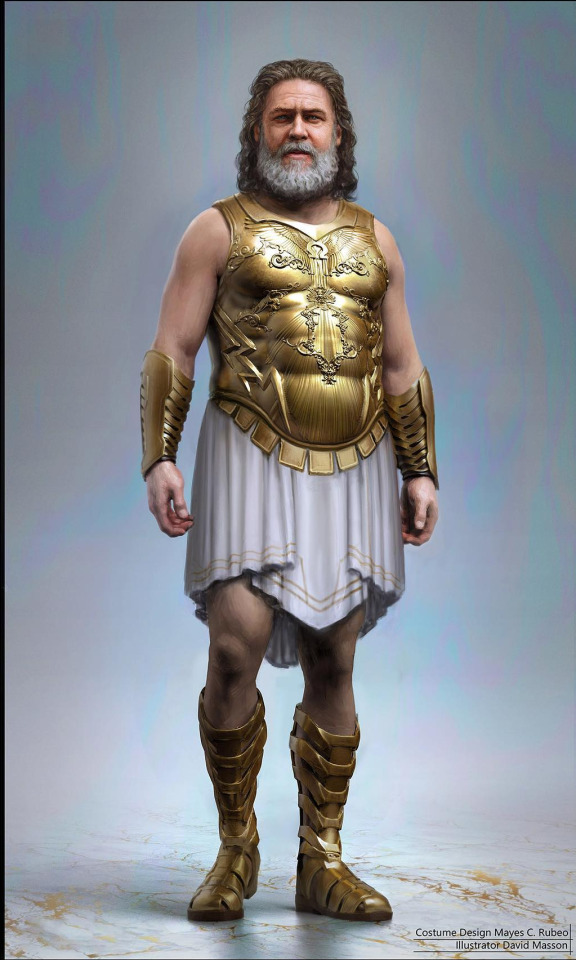
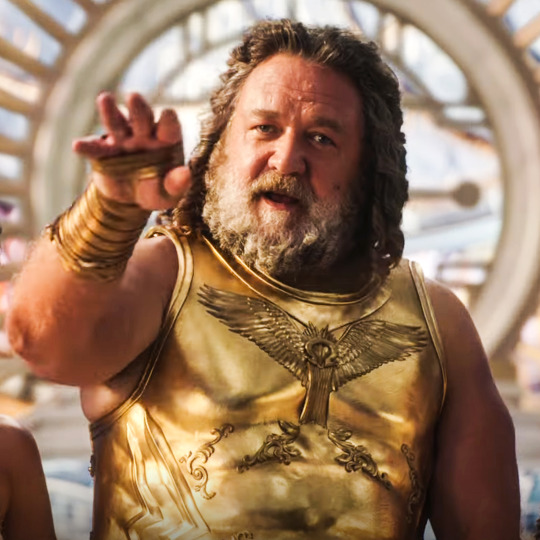

MINERVA (ATHENA)
Played by: Carmen Foon
Pantheon: Olympian
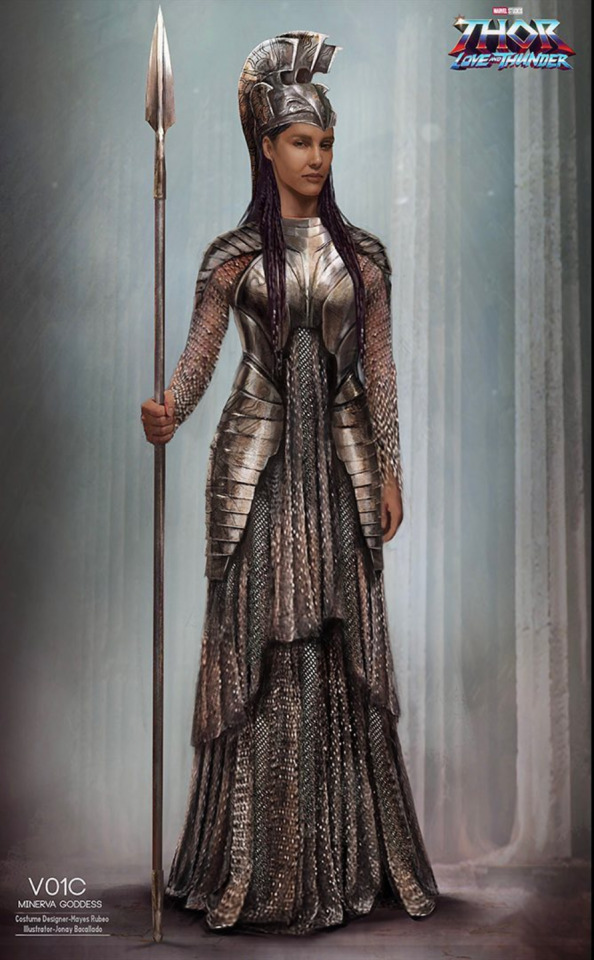

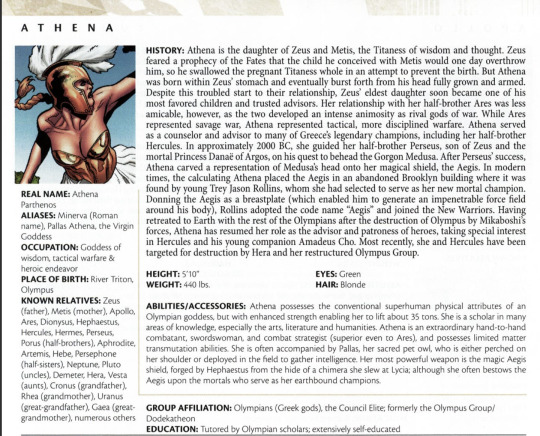
BAST
Played by: Akosia Sabet
Pantheon: Egyptian / Wakandan
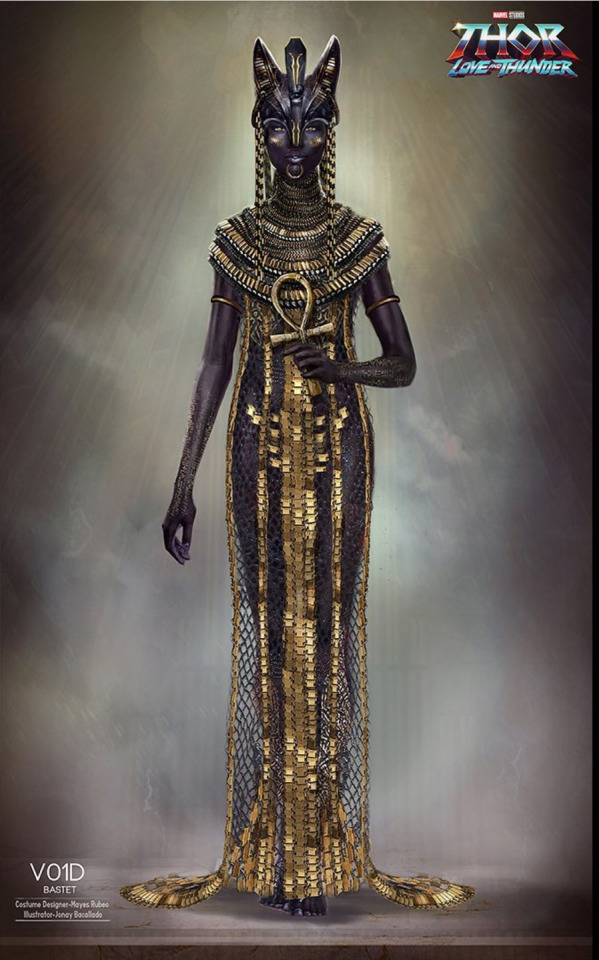
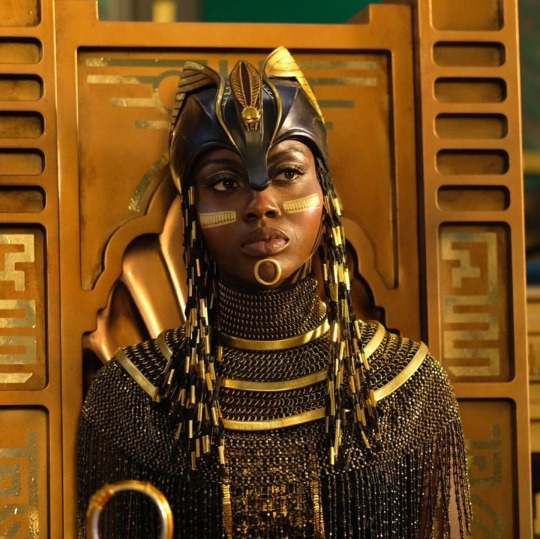
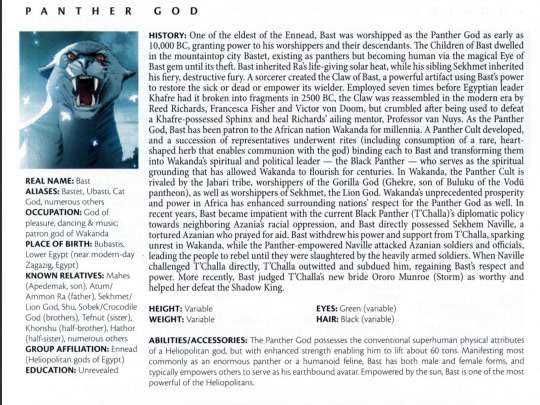
AZTEC GOD
Played by: Nico Cortez
Pantheon: Aztec

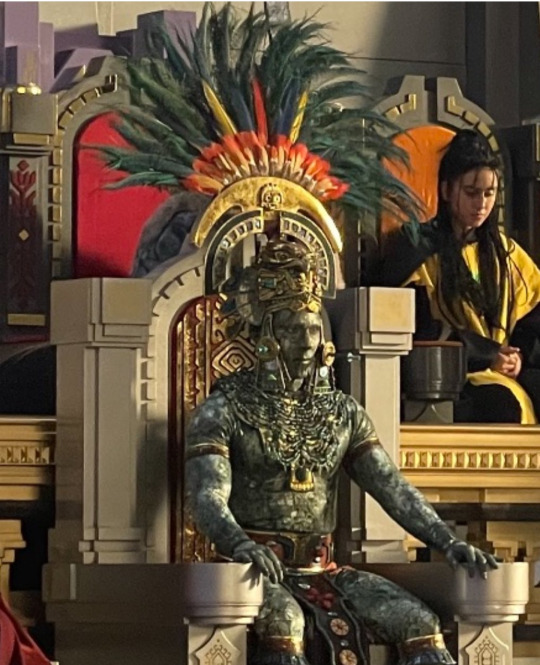
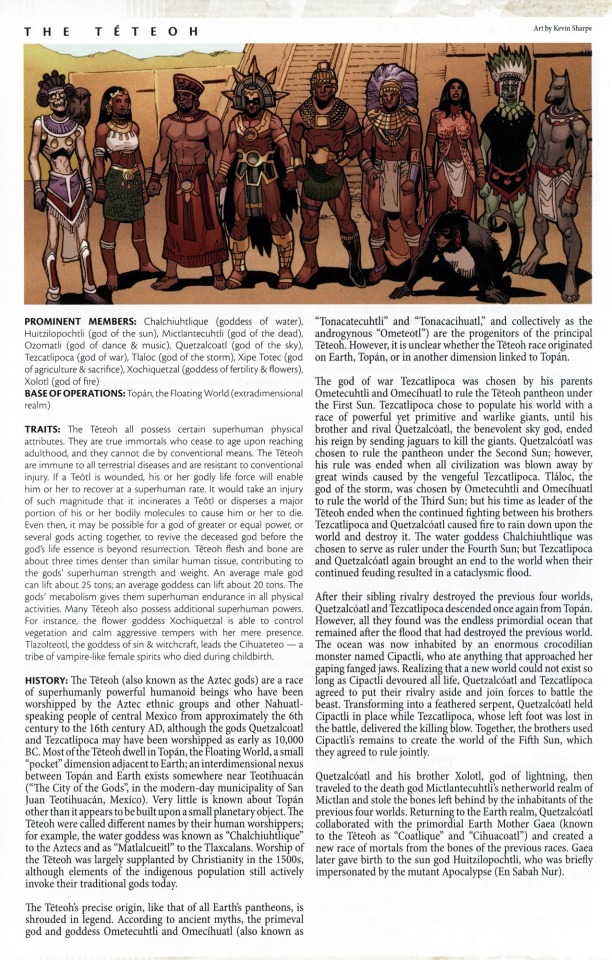
MĀORI PRINCESS
Played by: Chayla Korewha
Pantheon: Polynesian


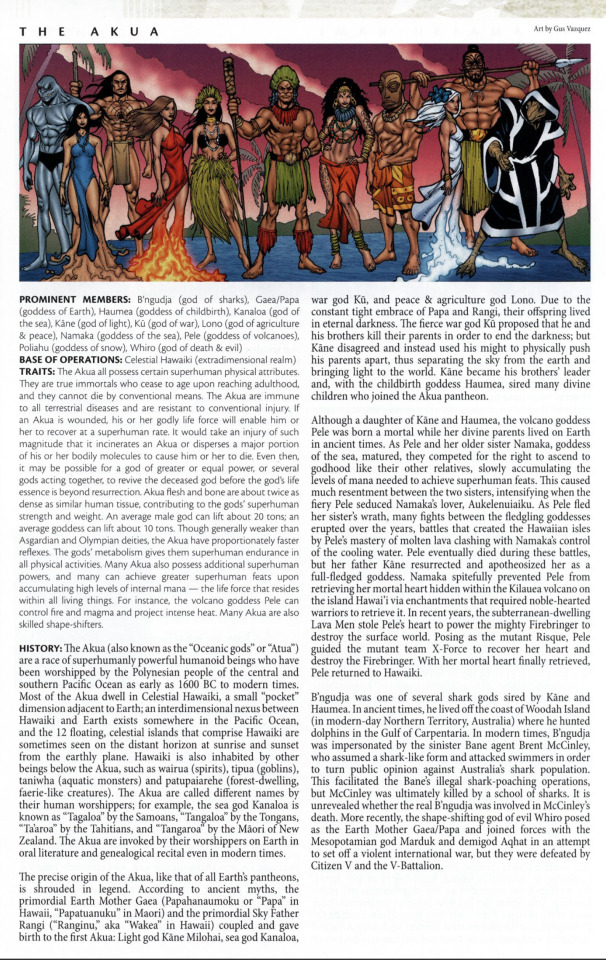
MAYAN GOD
Played by: Imaan Hadchiti
Pantheon: Mayan
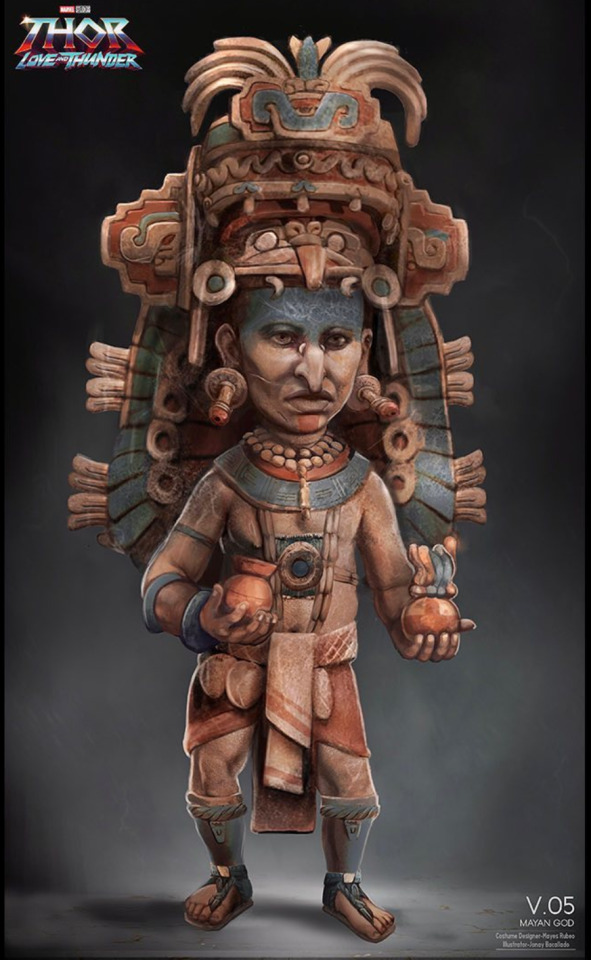

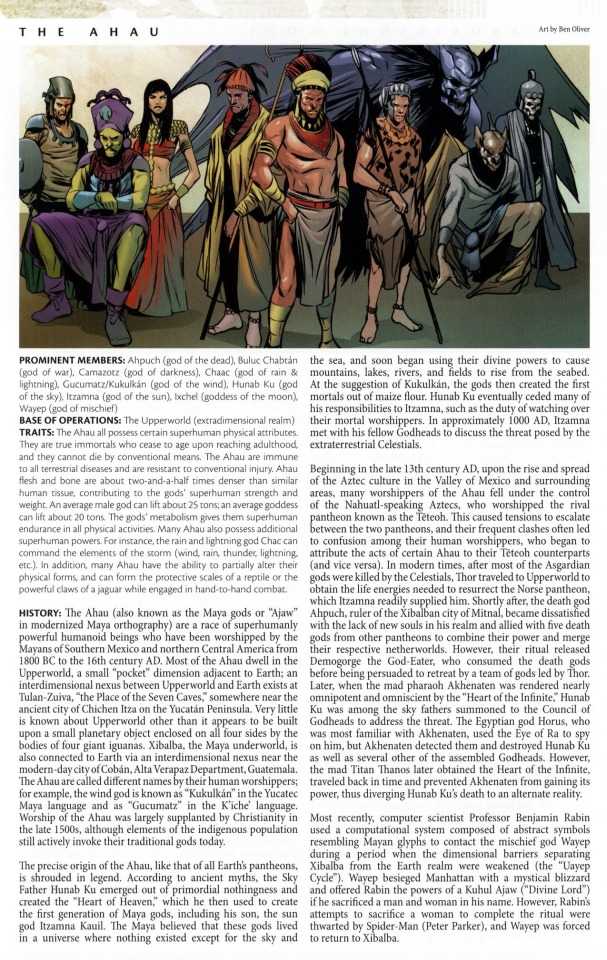
MASKED GODS
Played by: Justin Paul Hitchcock & Nazih Kheir
Pantheon: West African

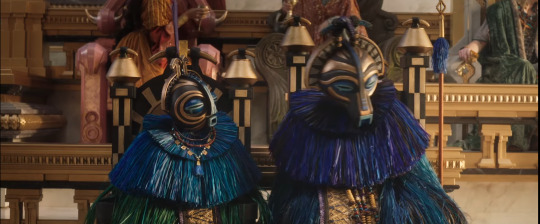

JADEMURAI GOD
Played by: Kuni Hashimoto
Pantheon: Chinese


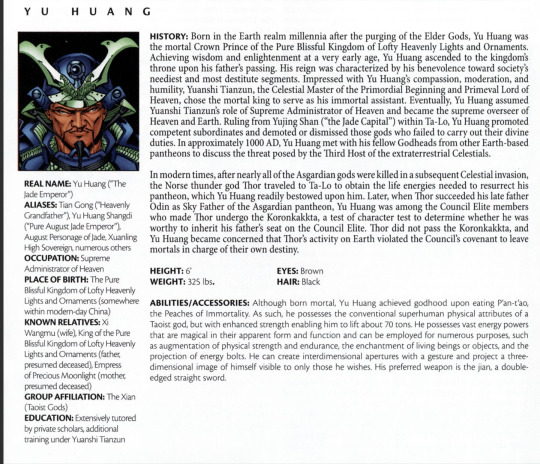
NINNY OF THE NONNY
Played by: Taika Waititi
Pantheon: Kronan



#thor 4#thor love and thunder#love and thunder#mighty thor#thor odinson#thor movies#mythology edit#myth#roman mythology#mythology#greek myths#greek mythology#egyptian#egyptian mythology#wakanda forever#black panther#wakandans#bastet#greek gods#athena#zeus god#marvel#marvel comics#comics#marvel cinematic universe#marvel movies#mcu#mcu phase 4#thor#talocan
88 notes
·
View notes
Text
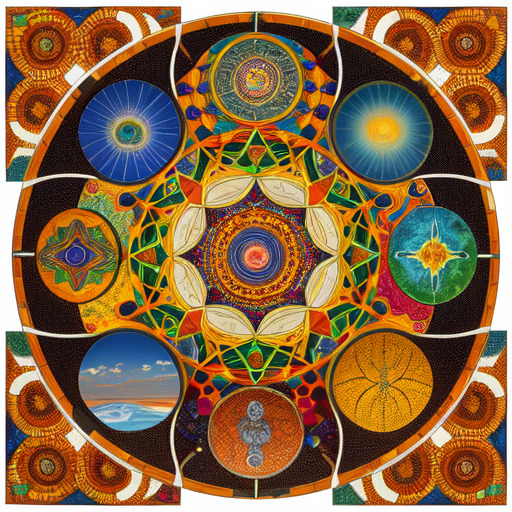
Unraveling the Mysteries of African Spirituality
Africa, with its vast landscapes and diverse cultures, is home to a tapestry of spiritual traditions that have thrived for millennia. Today marks the beginning of our exploration into the rich and multifaceted world of African spirituality, a journey that promises to unveil the mysteries, traditions, and profound wisdom that have shaped the continent's spiritual landscape.
Introduction: The Cradle of Spiritual Diversity
Africa, often referred to as the cradle of humanity, boasts a cultural and spiritual diversity that is both awe-inspiring and deeply rooted. From the sun-kissed deserts of North Africa to the lush rainforests of Central Africa, and the savannahs of the East to the vibrant cultures of the West, each region carries its unique spiritual essence.
1. Understanding African Cosmology
At the heart of African spirituality lies a profound cosmology that perceives the universe as an interconnected whole. The concept of Ubuntu, emphasizing the interconnectedness of all things, forms a cornerstone of many African belief systems. Exploring this cosmological perspective provides a gateway into understanding how spirituality is woven into the very fabric of daily life.
2. Ancestral Worship: Bridging Past and Present
Ancestral worship stands as a pillar of African spirituality, fostering a deep connection between the living and the departed. Unlike some Western traditions, where ancestors are often relegated to historical figures, African communities maintain a vibrant relationship with their forebears. Rituals, ceremonies, and offerings become a way to honor, seek guidance, and maintain a harmonious balance between the seen and unseen realms.
3. Symbolism and Spirituality
African spirituality is rich with symbolism, where everyday objects, animals, and natural elements take on profound spiritual meanings. From the sacred Baobab tree symbolizing life and resilience to the rhythmic beats of drums communicating with the divine, symbolism weaves through rituals and ceremonies, connecting the physical and spiritual realms.
4. Rituals and Ceremonies: Celebrating Life's Rhythms
Rituals and ceremonies play a pivotal role in African spirituality, marking significant life events such as birth, coming-of-age, marriage, and death. These ceremonies are not mere traditions; they are sacred expressions of spirituality, embodying the community's values, beliefs, and connections with the divine. Exploring these rituals unveils the depth of spiritual significance woven into the fabric of African existence.
5. Diversity in Deities: African Gods and Goddesses
A pantheon as diverse as the continent itself, African gods and goddesses reflect the multifaceted nature of spirituality. From Anansi, the spider god of wisdom, to Oshun, the Yoruba goddess of love and fertility, these deities encapsulate various aspects of human experience and the natural world. Understanding their stories provides insight into the moral, ethical, and spiritual foundations of African communities.
Conclusion: Embarking on a Spiritual Odyssey
As we conclude our first foray into the realms of African spirituality, it becomes evident that this journey is more than an exploration; it is a deep dive into the soul of a continent. African spirituality transcends borders, reaching into the hearts of those willing to embrace its wisdom.
In the coming days, we will unravel more layers of this intricate tapestry—exploring divination practices, the role of music and dance, and the ever-evolving landscape of African spirituality in the modern world. Join us on this odyssey as we seek to understand, appreciate, and celebrate the profound spiritual heritage that Africa generously shares with the world.
3 notes
·
View notes
Note
Not to be too foward, I was reading your pin to get to know you better ✨
And I came across the "Sub-Saharan African mythology" point.
OP, I am on my knees, if you've never had the opportunity to info dump, now is the time 😭😭😭
Lay it on me, if you feel like it, let's fucking goooooooooooooooooooo!
Oooo!
I only know bits and pieces but what I do know is treasured! As a disclaimer, I'm a hobbyist who's not of the culture(s) I'm researching relying on various online, museum, and word-of-mouth sources on a topic that isn't well documented.* You've been warned!
The basics
Sub-saharan african mythology & folklore is a lot like native north american mythology & folklore. There tend to be varying amounts of deities and spirits who shape and influence the world, interspersed with animal folklore. In animal folklore various animals - like coyotes, rabbits, or chameleons - shape the world in little ways, often explaining the animal's own nature (why the spider has long legs, why the coyote has yellow eyes). (I am mixing american and african animal folklore here for convenience & to prove a point.)
the cultures
west africa/the yoruba: These come closest to our idea of a pantheon, like the greek gods. There are some primary creator deities, and other deities of lightning, rain, rivers, metallurgy, etc referred to as Orisha. This culture has comparatively little animal folklore.
east africa/the maasai and gikuyu: These ones have a single creator deity and lord of all things, living in the sky (but also all around) similarly to the monotheistic idea of god. Other forces include spirits of the dead and ancestor worship, but it can depend heavily on which tribe. These cultures lean more heavily into animal folklore, a major one being how the chamelon and the lizard delivered the news of death.
north africa/egypt: we all know a little bit about egyptian mythology. It's also above the sahara, lol.
south africa: I actually don't know very much about south africa except one bit of animal folklore. I'm more about central africa.
There's a lot more I could say; I know a few stories, and some more specifics about east african cultures, but I'm running out of steam hardcore. It'll be easier if I'm asked about something in specific.
Thank you so much for asking, I rarely get the chance to talk about this stuff!
*that oral history, huh...
5 notes
·
View notes
Text
We all know that Supernatural is fiction, but it rests on a bedrock of folklore and religion. Now and then, it seems like the writers should've read a little deeper into those. This poll is about those times.
10 notes
·
View notes
Text
No hate or anything but as a writer who is also a reader I guess I’m always baffled and a little….skeptical about the Greek Gods AU thing. Mostly because often there are so many other pantheons that make more sense and are readily available. There are multiple East Asian pantheons of gods, and if the character also happens to be Korean or Japanese I would probably more quickly associate them with one of those than Poseidon or Hermes. There’s a really interesting West African pantheon I don’t see getting used often either. There are just…so many options out there. And this is not to stomp on anybody’s ideas because sometimes you just have the ideas that you have, and you execute them in the way you’re most comfortable with. There’s also the fake that Greek happens to be the mythology more featured in media and taught about in school unless you specifically take courses about other mythologies. Still, I guess as a POC I would like the pantheons of POC cultures and regions to be shown more sometimes…
3 notes
·
View notes